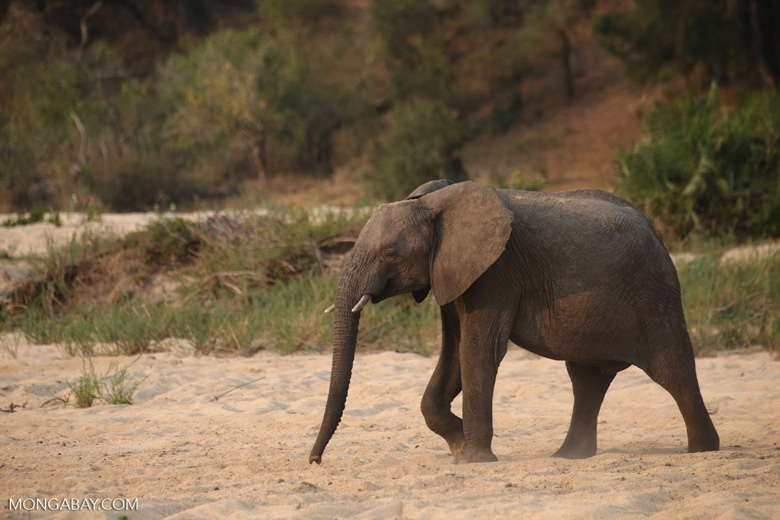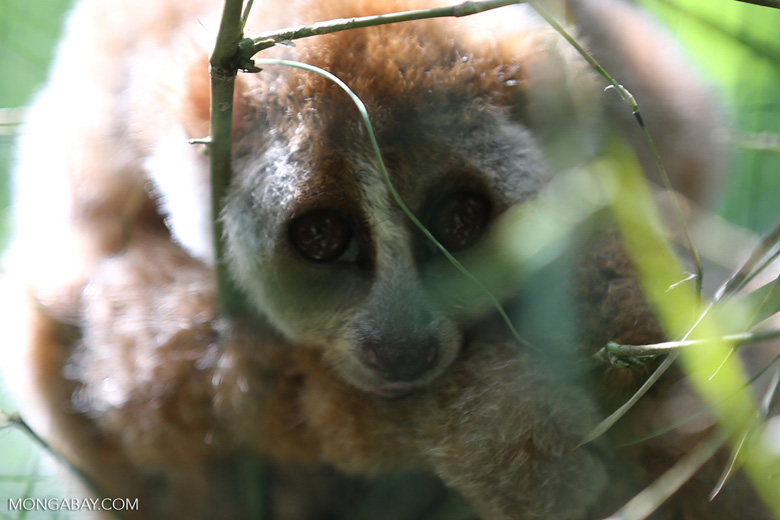- Berta Cáceres, a Honduran environmental and indigenous rights activist was gunned down in her home.
- Fourteen members of an organized crime gang have been convicted of plotting to steal rhino horn and Chinese artifacts estimated to be worth over 80 million dollars.
- A recent count of both West Indian manatees and monarch butterflies showed that their populations are continuing to see a rise in numbers.
Scientists were surprised by what they heard from under the sea [NPR]
The depths of the ocean are often thought of as being peaceful and quiet. At least that’s how a group of researchers imagined it to be, before they dropped a microphone six miles down into the Mariana Trench in the Pacific Ocean. What they heard gave them a new and different idea of what life is like below the ocean’s surface.
A Honduran environmental and indigenous rights activist has been gunned down [Mongabay]
Since 2006, Berta Cáceres led a tireless campaign against the Agua Zarca Dam that threatened to displace thousands of Lenca people from the community of Río Blanco. Alongside her work, she fielded multiple death and rape threats.
Yellowstone grizzly bears may soon be dropping their threatened status [CNN]
As spring draws near and the grizzly bears of Yellowstone emerge from their hibernation, they will be waking up to some good news this year. The U.S. Fish and Wildlife Service says that the bear population has recovered and no longer needs the threatened status for protection.

Crime gang faces jail time for plotting to steal rhino horn and Chinese artifacts [Irish Examiner]
Fourteen members of an organized crime gang have been convicted of plotting to steal rhino horn and Chinese artifacts estimated to be worth over 80 million dollars. This week a jury at Birmingham crown court convicted four of the gang’s “generals” who helped to plan and oversee a string of offences.
A disagreement with local farmers could mean the end of these wild bison [Deutsche Welle]
In 2013, a heard of eight European bison were released into Rothaar Mountains of west-central Germany as a first attempt to establish a free-range herd of bison in Central Europe after their extinction. Now, because of a disagreement with local farmers, these bison may have to be killed.
Facebook is emerging as a ‘thriving’ wildlife trade marketplace [Mongabay]
During a five-month investigation in 2014, TRAFFIC found that more than 300 individual animals, belonging to 80 different species, were for sale on 14 different Facebook groups. Several threatened mammals were for sale, including the vulnerable Malayan sun bear, Sunda slow loris, and smooth-coated otter, as well as the endangered white-handed gibbon.

Manatees and monarchs appear to be making a major comeback [Washington Post]
Wildlife officials recently announced some good news for two species. A recent count of both West Indian manatees and monarch butterflies showed that their populations are continuing to see a rise in numbers. But while both species are making a rebound, it is clear that conservationists still have a lot of work ahead of them to stabilize both populations.
How climate change could cause changes in your diet [New Scientist]
A recent study has found that the biggest health impact of climate change that could affect the human population in the short term is it’s impact on how many fruits and vegetables are available to eat. Researchers say a warming climate will make it harder to come by these essential foods, which could lead to thousands of deaths that would have otherwise been avoided.
WWF is accused of violating human rights of tribal people in Cameroon [Guardian]
Survival International, a leading tribal defense group, has accused the world’s largest conservation organization of funding anti-poaching eco-guards who were victimizing pygmy groups living in the rainforests of Cameroon.

Poaching for ivory has stabilized, yet elephant deaths continue [BBC]
A 2015 report shows that poachers are killing elephants at a faster rate than new elephants are being born. Now the overall poaching levels seem to be remaining below the sustainability threshold, however, an upward trend in killing was seen for the first time in Kruger National Park.
This dragonfly was found to be the world’s longest-distance flyer [UPI]
Scientists have long been both perplexed and impressed by the globe skimmer – not sure exactly how the dragonfly made its way to one continent to the next. However a recent genetic analysis of the dragonfly may explain how the species is capable of making such long-distance treks.
MONGABAY HIGHLIGHTS
The smallest of giant flowers was ‘accidentally’ discovered in the Philippines
In the rainforests of southeastern Asia, a parasitic plant called Rafflesia produces the world’s largest flowers. These flowers, called “corpse flower” locally, often smell like rotting flesh. Now, on Luzon Island in the Phillipines, a team of scientists have discovered the smallest of these giant flowers.

An investigation into Japan’s slow loris pet trade may have prompted some action
In 2014, the Telegraph ranked slow lorises as one of the “top 10 internet superstar pets”. Unfortunately, their rising online popularity as exotic pets is fueling the illicit trade in these animals and Japan is emerging as a major black market for illegally obtained slow lorises.
The African palm oil frontier is expanding deeper into the Peruvian Amazon
Peru may be playing a more visible role in climate negotiations, especially related to conservation of its tropical forests. But despite this, deforestation has been increasing over the past 15 years, especially in its Amazon region.
A home to many crocodiles, boas, eagles and more has been destroyed in Cancun
The construction work for a multi-use development was carried out as previously agreed, but the animals and plants were not rescued before clearing out the area —something that is required by law. Two days after the mangrove clearing started, several people entered the site and observed living animals such as crocodiles, boas, eagles, herons, frogs, squirrels and iguanas as they fled.
